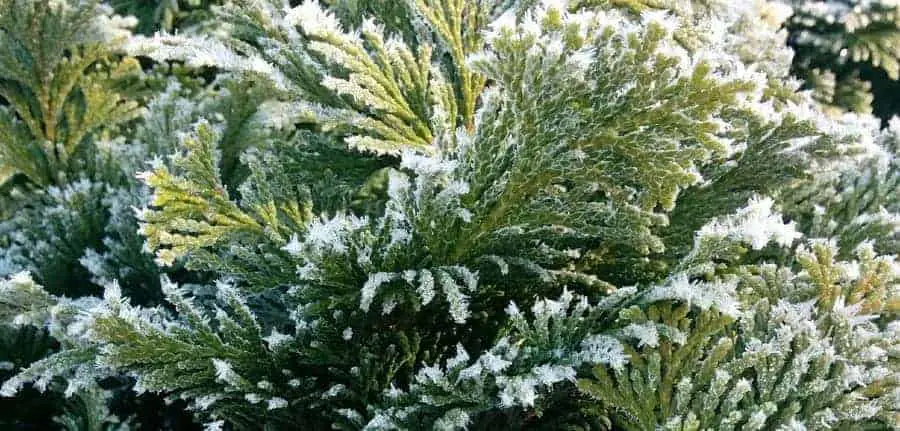
Yes, there are plants for your containers that are in the shade for the winter months too.
These are some of my favorites:
Tall: Camellia, Rhododendron, and Laurel
Medium: Fragrant Sweet Box, Lenten Rose, Autumn Fern, Pachysandra, Mondo Grass
Low: Dwarf Mondo grass, Liriope, Ivy, Vinca
Finding plants that have year-round interest in climates with a cold winter is challenging; add to that the challenge of a shaded area may seem like double jeopardy. But, to help clear things up, first, we have to define shade.
This is a link on how to determine how much sun or shade you have in a location, translated into terms on the plant tags at the garden center. It is geared towards summer, but the same concept applies.
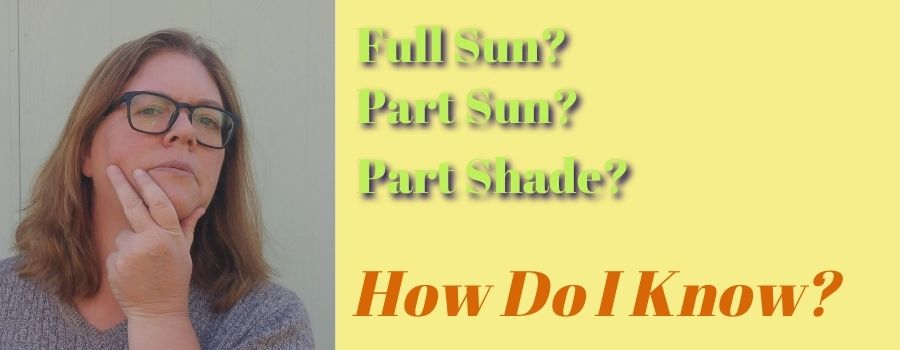
The first question to ask yourself (and yes, do actually time this on a day you are around) is how much direct, full-on, the sun does the areas you will put these living, growing plants into, if any? From what time, to what time? Click here for the sun guide.
In general:
Part Sun:
- 4-6 hours of direct sun in the first category, morning and evening, only
- dappled or no sun but bright the rest of the time.
Full Sun:
- over 6 hours of direct continuous sun in the morning and/or evening
- 4 hours+ of midday sun
- 6+ hours afternoon
Part Shade:
- less than 4 hours of direct sun in the first category, morning and/or evening only
- dappled sun/shade during the rest of the day
Full Shade:
- less than 2 hours of direct sun morning and/or evening only
- dappled sun to no sun during the rest of the day
Do keep in mind that a shade plant can tolerate full sun in the winter because of the greater angle of the sun. The light is less intense.
You can take advantage of this by growing these container plants in your shadier areas in the summer, and highlight them in your sunny areas in the winter! Plant Dollies are a great thing!!!
These are some of my favorites:
You can either grow these in mixed containers using the famous “thriller, filler, spiller” recipe ( hey, why mess with what works?), or highlight a single specimen plant.
Let’s look at each of these plants:
Camellia sasanqua and Camellia japonica
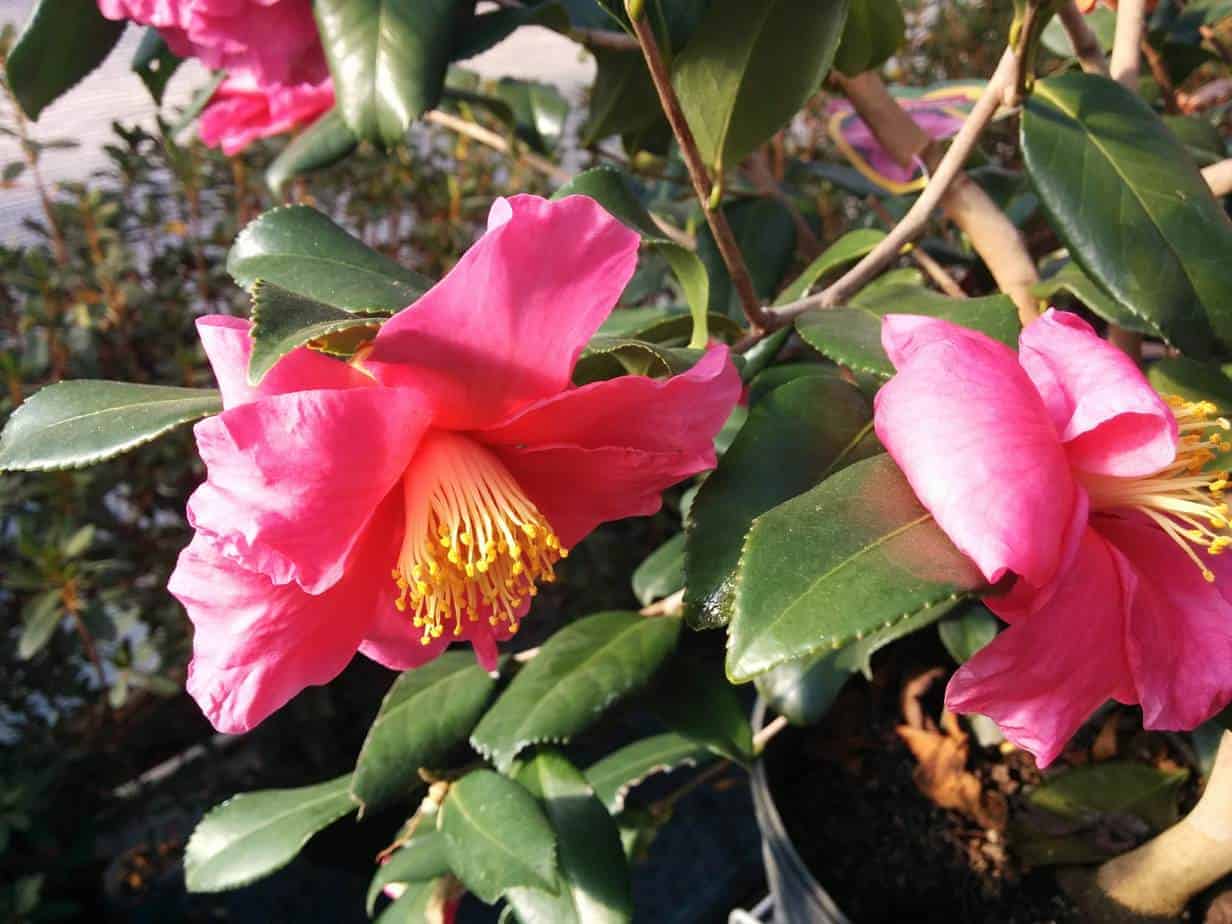
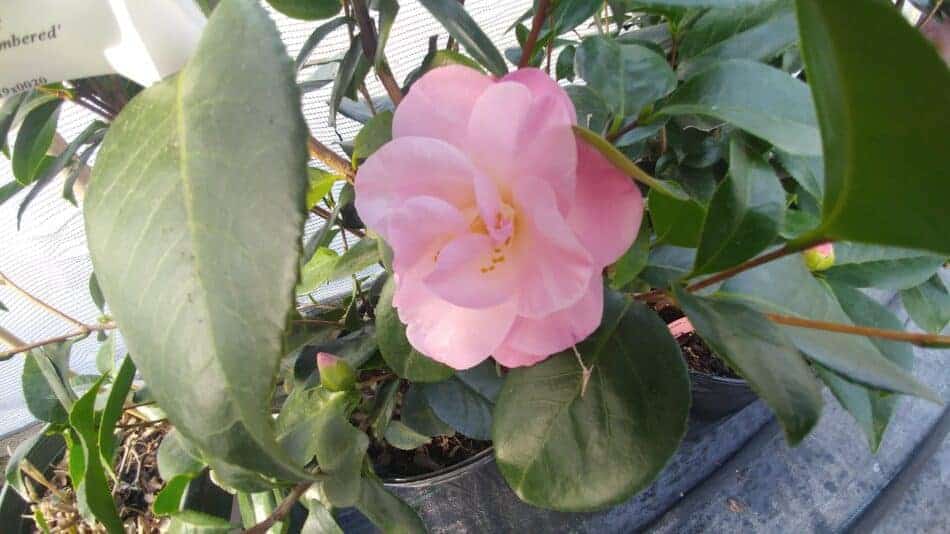
Both of these are evergreen, hold their leaves all year, and can be kept down to a manageable size for containers. Depending on variety there is a wide choice of flower colors and natural heights. A variety with a smaller natural height will require less pruning to be kept in a container. They are usually slower growing, so purchase the plants close to the size you want them to be if you do not want to wait years to get to the size you want.
Camellias need to be very well-drained, humusy, acid soil. A good potting mix for camellias will contain ⅓ bark mulch, ⅓ COARSE peat, ⅓ a cactus (or labeled well-draining) potting mix. If possible, a mix containing pumice or expanded shale for long-term drainage is even better. Perlite is good for seasonal drainage but breaks down after a season or two and you will lose the drainage properties.
Camellias require an acid-lover fertilizer. A fertilizer labeled for azaleas is the right one. Regular fertilizer, by the nature of fertilizer chemistry, raises the pH of the soil. Since camellias are adapted for acid soil conditions, you need to provide that lower pH. Luckily this is easier to do in a pot than in your garden 🙂 by the choices, you make in potting soil and fertilizer.
These Camellias are great choices for a pot you want for a sunny area in the winter and a part shade area in the summer; this would be under the light shade of a deciduous tree that drops its leaves for the winter. Winter hardiness Zones 7-9 for both types of camellia.
Rhododendron

Here are just a few of the many great varieties to choose from.
‘Snowlady’
‘Black Satin’
‘Northern Rose’
‘Elvira’
‘Boule de Neige’
Rhododendrons like the same soil mix as camellias. Very humusy, peaty, well-drained, and acidic. If you are adding something to lower the pH of your mix. Do NOT use aluminum sulfate, research has shown rhododendrons and azaleas are damaged by aluminum buildup in the soil, called aluminum toxicity. Use a product containing elemental sulfur instead.
Rhododendrons, like most plants, prefer to be out of the driving, drying wind. However good ventilation is vital to healthy plants, in other words, stay out of stuffy inside alcoves, as well as drying persistent winds.
Laurel
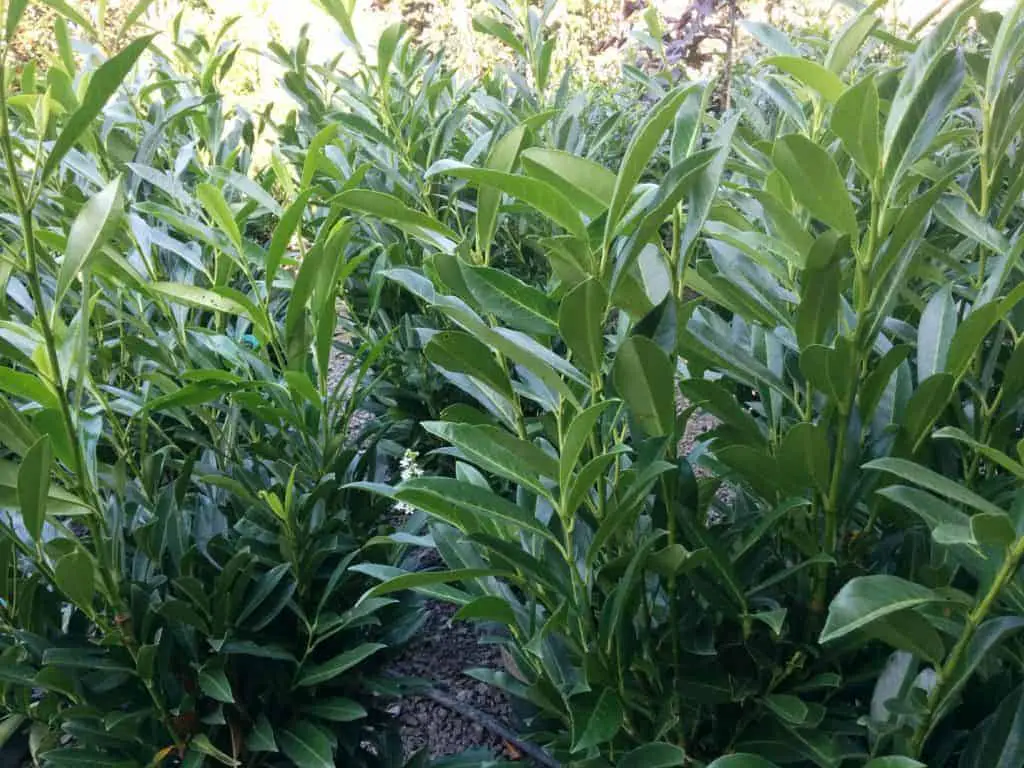
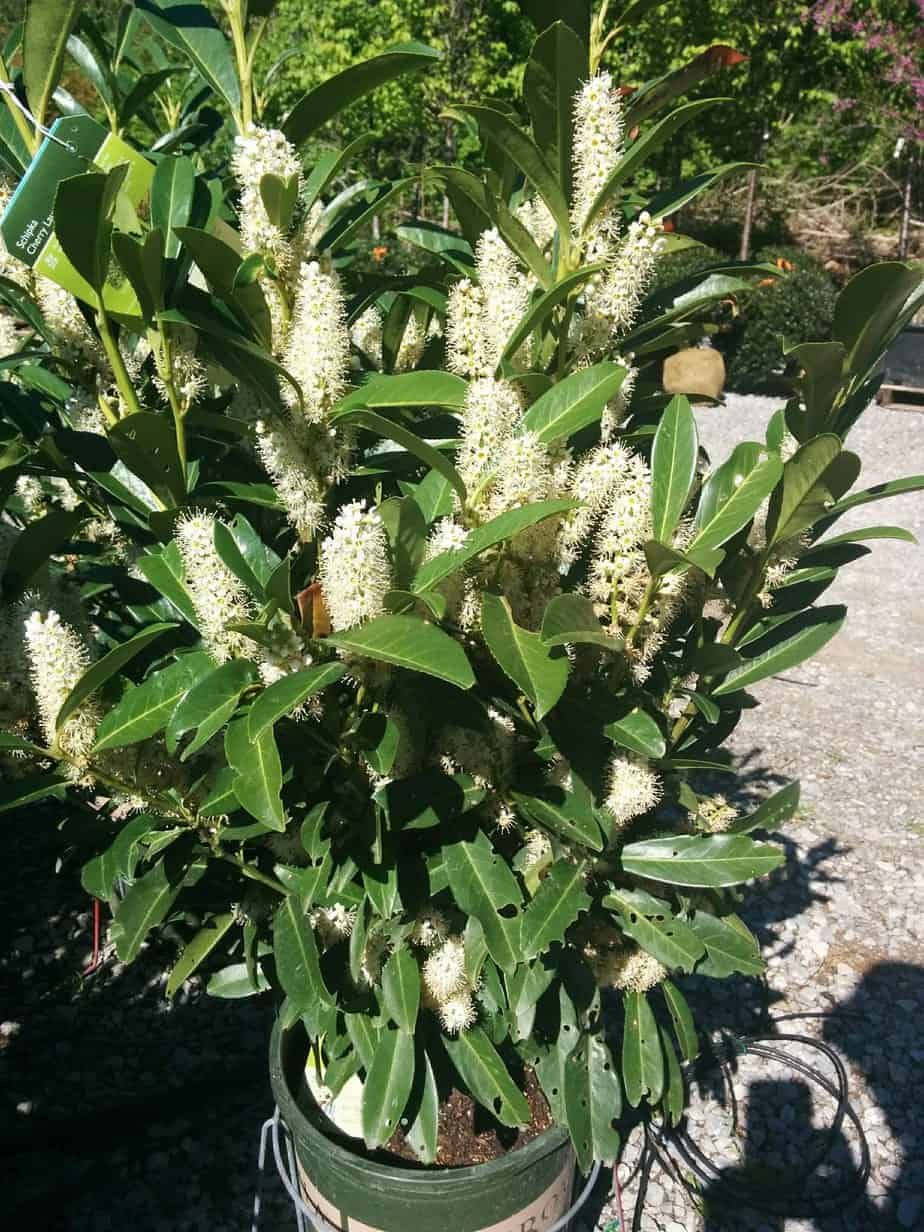

Pieris japonica & Prunus laurocerasus, yes, I know they are both called laurels and no, they are not the same plant and not the one I am referring to here.
Both types of plants commonly known as laurels grow well in the same planting mix as camellias (are you noticing a pattern here?) ;most shade evergreens naturally grow in the shade of larger forest trees, which drop needles and drink up most of the water quickly. Hence the acid pH and no tolerance for wet feet (slow draining soil). For laurels, you can use English laurels or mountain laurels. Both can be grown in part shade and part sun. English or cherry laurels for the green foliage, and mountain for the color of new foliage and spring flowers.
Laurels, like most plants, should be planted in your pot with a space, about 1-2 inches, between the top of the soil and the top of the pot. The depth of the lip depends on the size of the pot. From 1” to 3” is a good place to start. Remember, this is not rocket science, it is not baking, with very specific and exact amounts for success. This is a science that uses a bell curve, there is a range of acceptable conditions, so do not get too stressed over exact proportions or measurements. Zones 4-9 and 6-8 respectively.
Fragrant Sweet Box
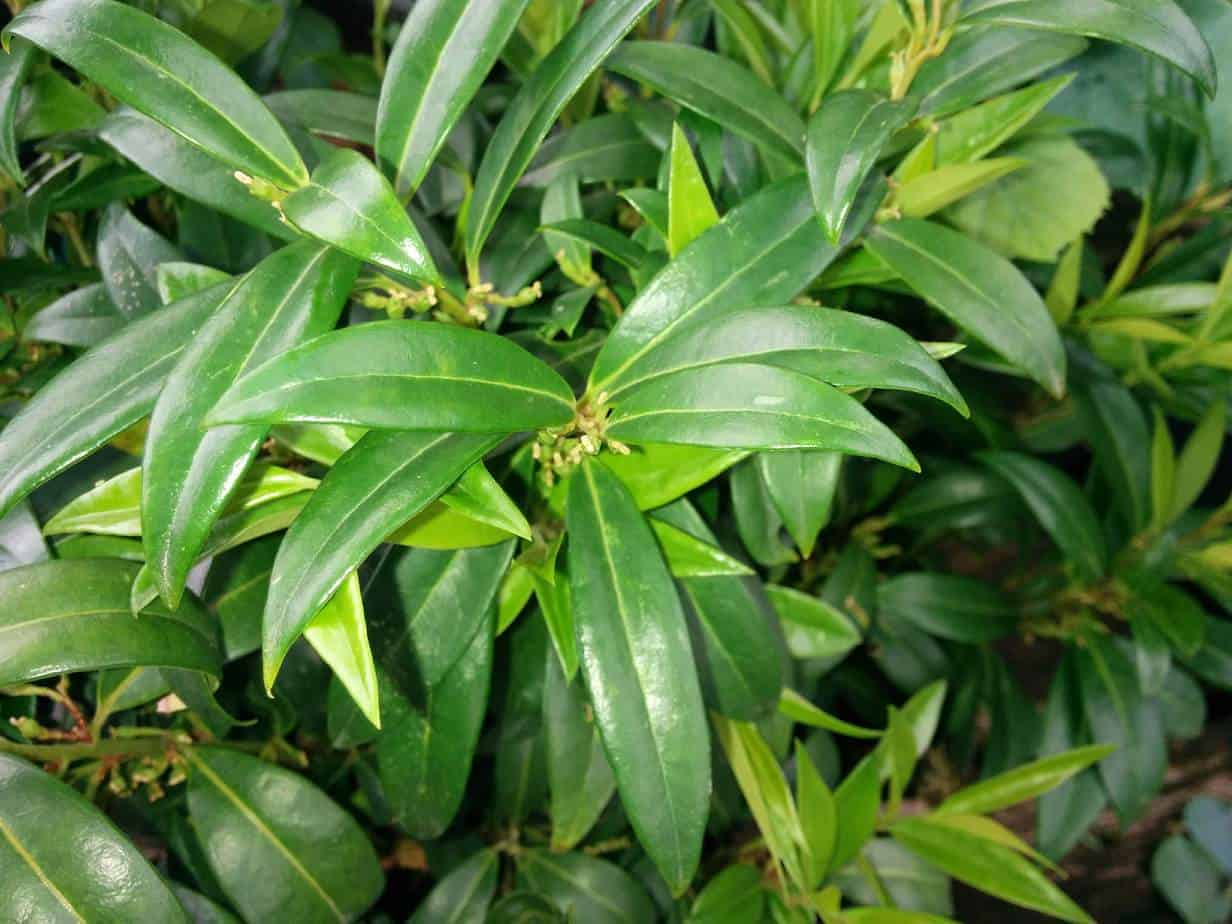
Sarcococca confusa & Sarcococca hookeriana var. Humilis are 2 great varieties of Sweet Box.
They are fantastic for full-shade areas (like a covered front porch!), and in spring, around March they start to flower with the most wonderful vanilla fragrant blooms (again, great for a covered front porch).
Sweet box also loves the same soil mix and careful not to water too often. As with all of these, water thoroughly and deeply ( usually soak 3 times, filling to the top of the lip of the container, pause a few seconds after it soaks in, and do again, for a total of three times), and then WAIT and DO NOT WATER until it needs it! When it needs it will vary from plant to plant, you need to FEEL the soil, and if you can feel no moisture a couple of inches down, it is ready to soak again. not before. If you are asking yourself, “ Is it time to water yet?” The answer is no, wait 1 day, and check again. Zones 6-8
Lenten Rose
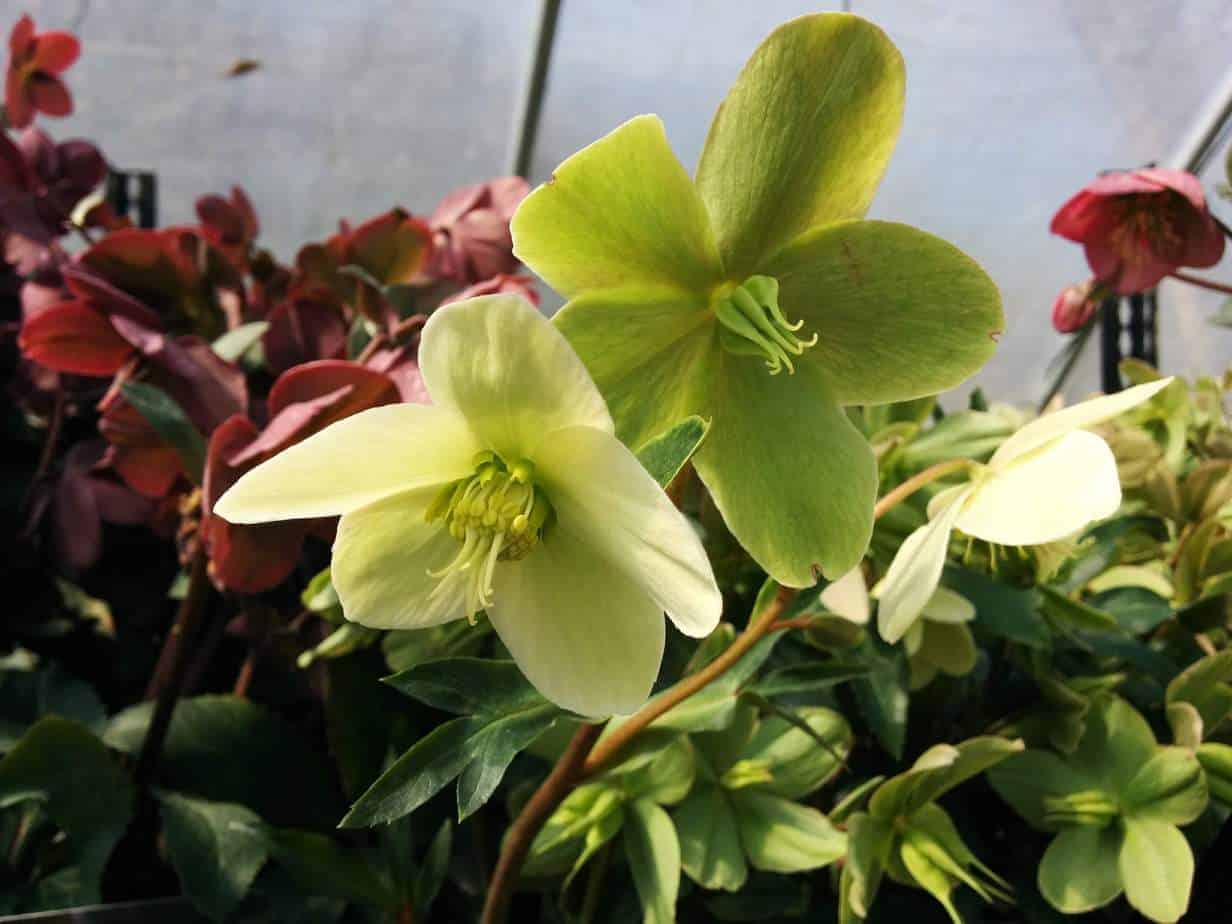
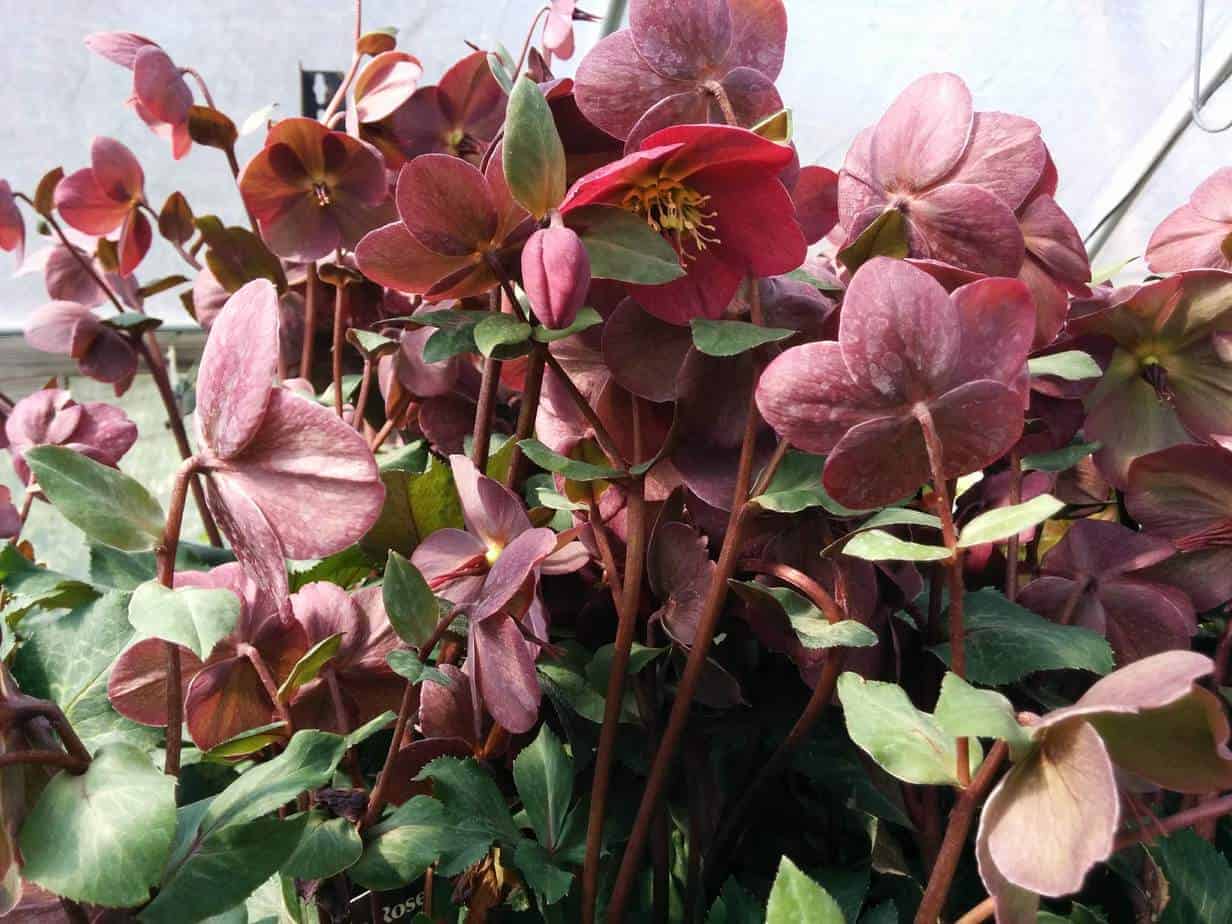
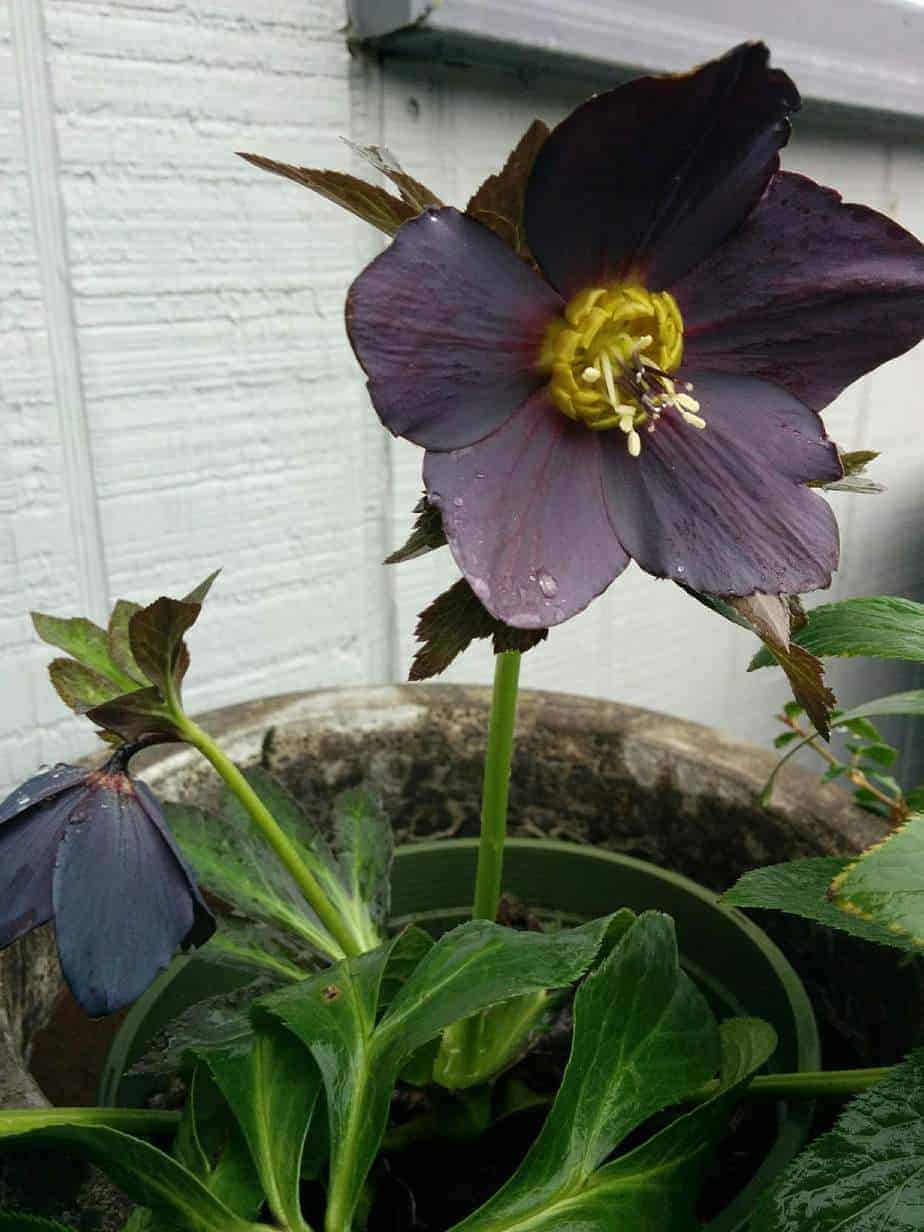
Hellebore, also known as Lenten rose, is a wonderful plant for containers, it is low growing, evergreen, and has beautiful flowers, which can be showcased in a raised up container. They bloom in late winter and early spring through mounds of bold dark green, evergreen, leather-like, multi-fingered, hand-shaped leaves.
Hellebore is also a great candidate for a part-sun to full-sun planter in the winter, then moved to a part-shade location for the summer. Also, the deer won’t eat it. You won’t come back to get it at the beginning of winter and find it has been eaten down to the crown. That is awesome! Zones 3-8
Autumn Fern
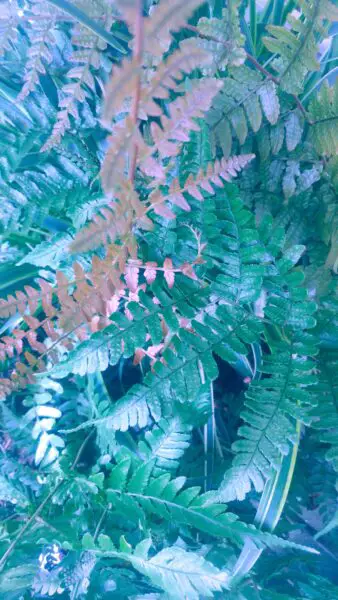
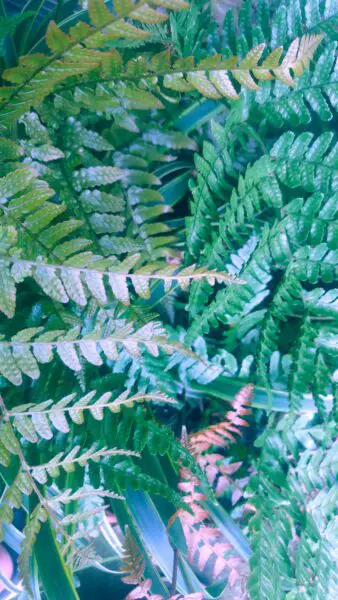
Dryopteris erythrosora, aka Autumn Fern, is a great nearly evergreen fern for containers; color throughout the season, new foliage a wonderful bronze, that matures to a green that stays evergreen until a hard freeze. Often on a protected porch, it can stay green be most of the winter. I do like to cut the foliage down to the crown about Valentine’s Day if I want my container to look full and fresh by early summer, or I will not cut back yet if it is there only for the winter foliage, and other things will take over in the spring.
This is a plant that likes to stay moist, not to dry out, so keep that in mind if using in a mixed container. The plants need to be compatible with their sun needs and water preferences, etc.
When watering the Autumn Fern, ask yourself “I wonder if it needs water, I’m not sure”. The answer is yes, water the Autumn fern at that time. Zones 5-8
Pachysandra
More on Pachasandra, click here to go to Missouri Botanic garden’s site.
Pachysandra terminalis is better known as a groundcover. It makes a marvelous bold texture evergreen addition to a shade container. It makes an interesting smaller container on its own, and a great player in a larger mixed planting.
Pachysandra can tolerate a lot. Shade to heavy shade, deer, rabbits, droughts, and clay soil. That is a lot to deal with! It likes acid soil, and in hot climates be sure that there is plenty of circulation. No stuffy places for this one. Zones 5-9
Mondo Grass
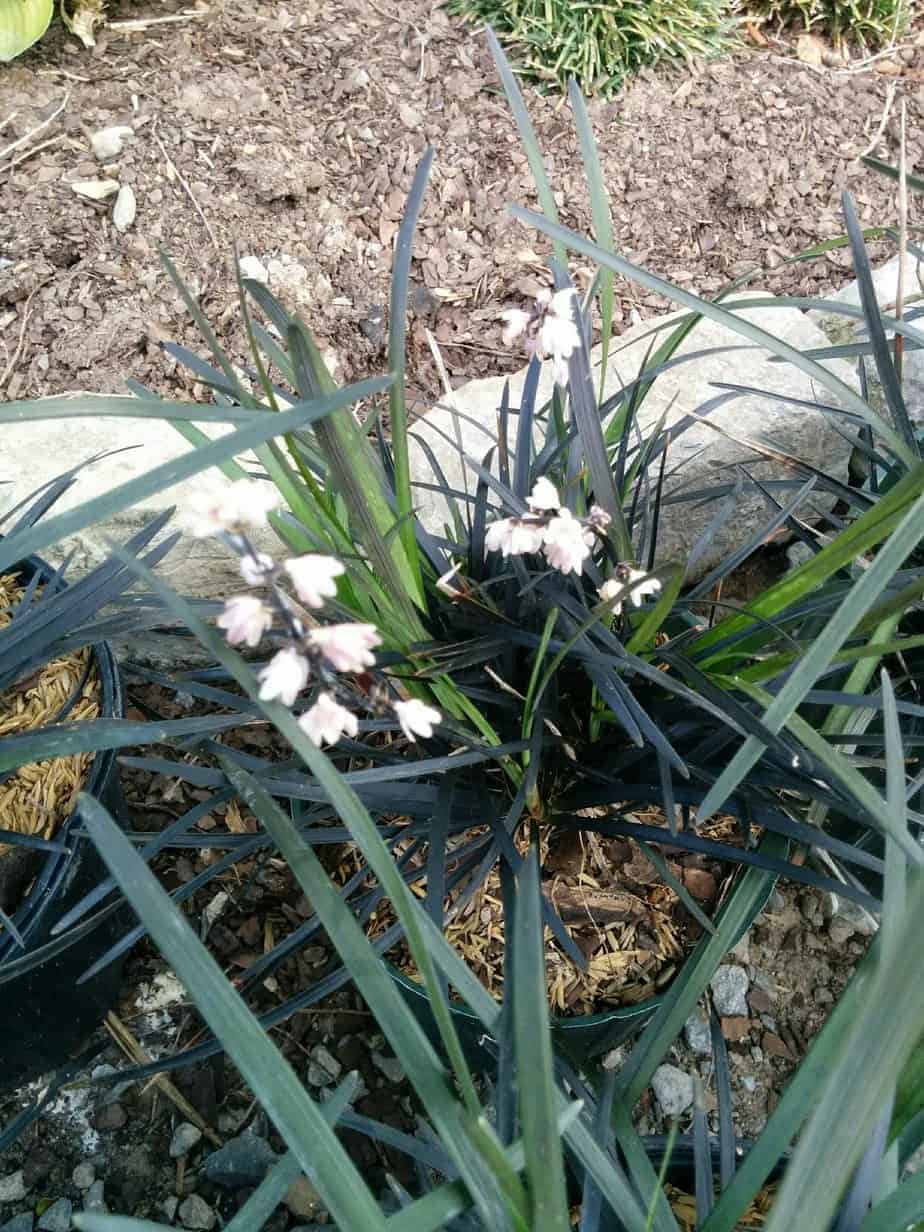
Ophiopogon japonicus, aka Mondo grass, is another of my favorites that are often overlooked in containers. It is very grass-like, with fine, dark green leaves that are completely evergreen. Mondo grass likes part shade to shade, but to get flowers, stick to part shade, even part sun in cooler climates. Flowers are not necessary to include this fine-textured, great deep colored plant in mixed plantings.
Even alone, it has grace and sophistication. Or it also makes a great hair stand-in for a head planter 🙂 8”- 12” tall. Zone 7-10
Dwarf Mondo Grass
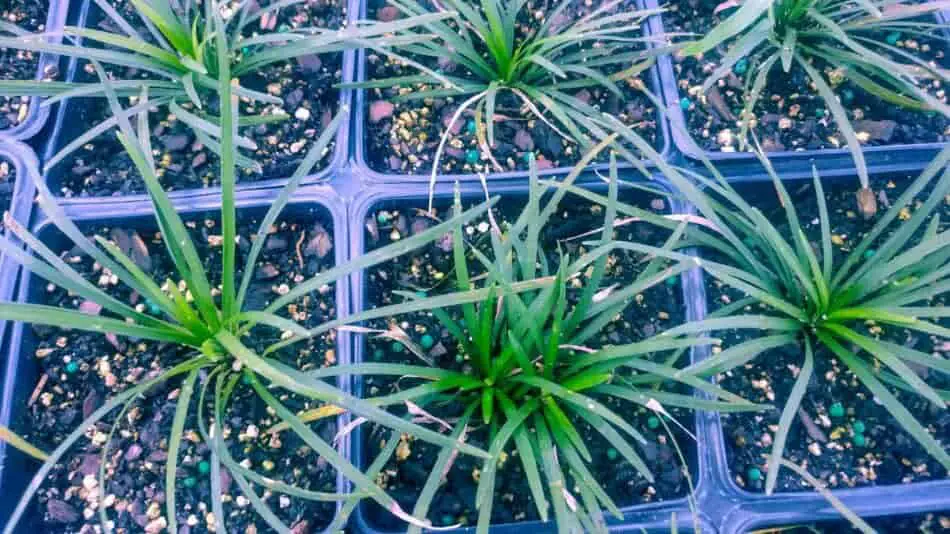
Same as Mondo grass, but shorter, this one only gets 1”- 2” tall.
Monkey Grass
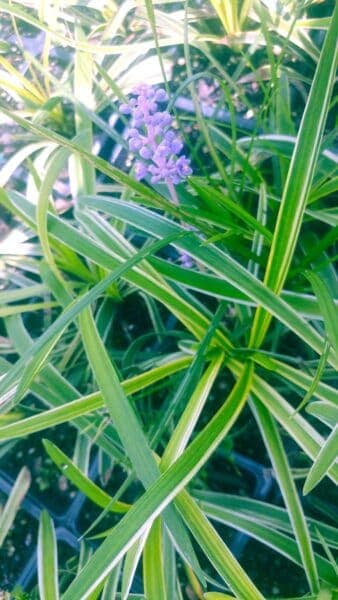
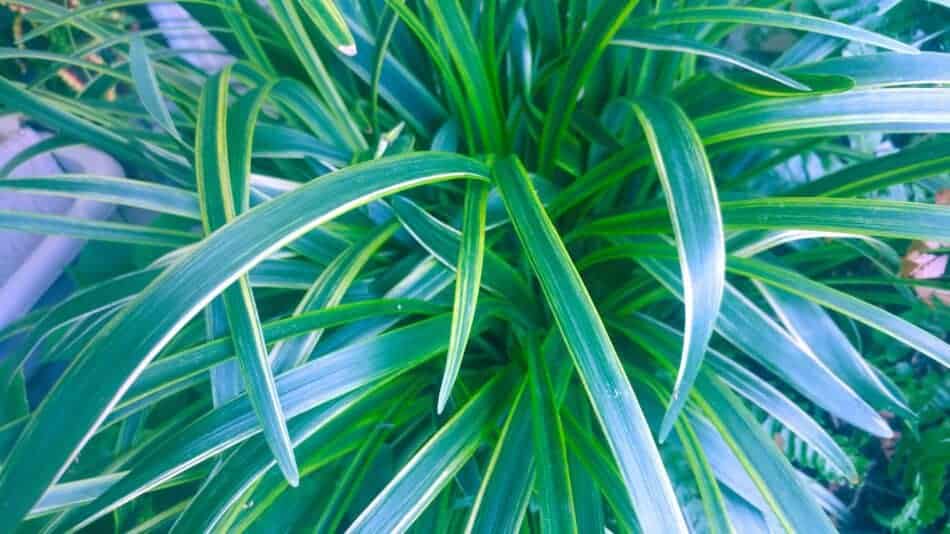
Liriope is a solid, cast iron performer. It can take the heat, humidity, and part-sun to dense shade. It also has grass-type foliage, but a bolder texture. From part shade to part sun, there is even the bonus of flowers in the late summer, and early fall when not a lot of things are blooming. Zone 5-10
Ivy

Several ivies will work well, My personal favorite is Algerian Ivy, Hedera algeriensis. It has a bold texture and comes in variegated and all-green leaves. When it does get cold out it gets shades of red streaks in the leaves. A nice effect. A classic spiller part of the mixed container recipe/equation. Zone 7-10
Perennial Vinca
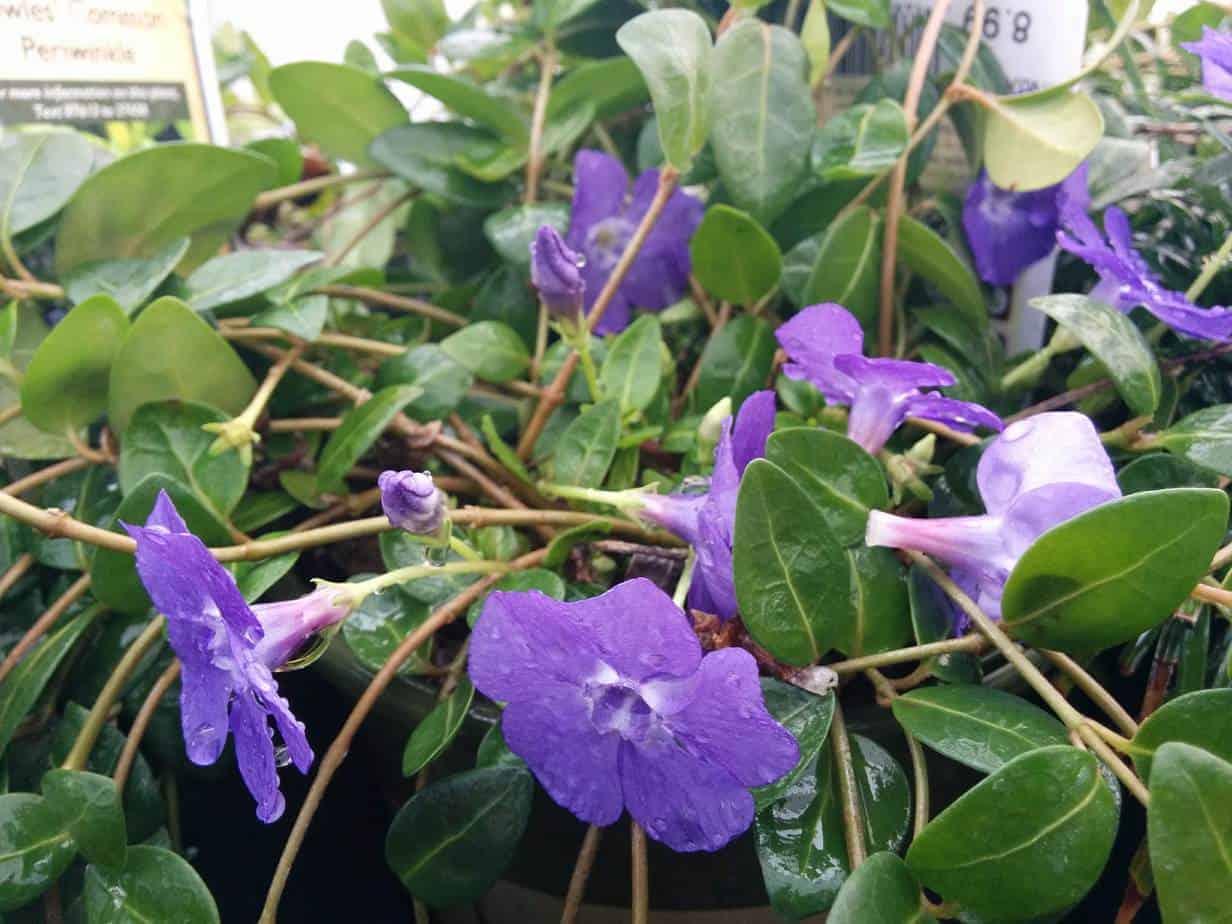
Another great shade plant that is often overlooked in containers. Use it instead of ivy for a finer texture, and for something a little different and surprising. With the partial sun, you will even be rewarded with blue flowers! Zone 4-8
For container plants used in the winter, be sure that any of the plants you use are 1 zone hardier than where your planting zone. And Have fun!! Send pictures of your containers!! BesideTheFrontDoor@gmail.com
Can potted evergreens survive the winter?
Yes, however, the important thing to consider is protecting the ROOTS. If the evergreen is normally within your winter hardiness zone, and temperatures do not drop down below freezing for more than a day or two at a time, you are in a good area to grow in pots in the winter. An important consideration is the plants need to be in thick-walled insulated pots. Think thick-walled, frost-resistant pottery or concrete.

